-
Using math to track, predict criminals’ next move
One way to study criminal behavior and predict a criminal’s next move is by analyzing his or her movement. Several mathematical models have addressed this in detail, in particular, the UCLA “burglary hotspot” model. Mathematicians now propose a mathematical model that analyzes criminal movement in terms of a Lévy flight, a pattern in which criminals tend to move locally as well as in large leaps to other areas. This closely replicates daily human commute in big cities.
-
-
UN inspectors’ report points strongly to Syrian government’s culpability in 8/21 chemical attack
UN chemical weapons inspectors will on Monday submit their report to UN secretary general Ban Ki-Moon, in which they will say that they have collected a “wealth” of evidence which points to the Syrian government as being responsible for using chemical weapons against its own people.
-
-
Syrian conflict renews focus on chemical weapons
Chemical weapons have been used several times in modern history, with Germany recognized as the first country to use such weapons on a mass scale in the 22 April 1915 attack on 6,000 British and French troops at Ypres, Belgium. Since the 1925 Geneva Protocol, which banned the use of chemical and biological weapons, chemical weapons have been used in five conflicts, with Syria being the sixth.
-
-
Unified military intelligence picture dispels the fog of war
Military operations depend upon the unimpeded flow of accurate and relevant information to support timely decisions related to battle planning and execution. To address these needs, numerous intelligence systems and technologies have been developed over the past twenty years, but each of these typically provides only a partial picture of the battlefield, and integrating the information has proven to be burdensome and inefficient. DARPA’s Insight program aims to bring real-time, integrated, multi-source intelligence to the battlefield.
-
-
Anti-ship missile prototype in successful first solo test flight
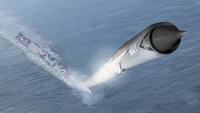
Adversaries’ sophisticated air defense systems can make it difficult for current air- and surface-launched anti-ship missiles to hit their targets at long range. To engage specific enemy warships from beyond the reach of counter-fire systems, soldirs may require launching multiple missiles or employing overhead targeting assets such as radar-equipped planes or Global Positioning System (GPS) satellites — resources that may not always be available. To address these challenges, DARPA and ONR are collaborating on the Long Range Anti-Ship Missile (LRASM) program, which successfully launched its first prototype on 27 August.
-
-
Disarming Syria of chemical weapons exceedingly difficult, lengthy, uncertain process: experts
The Russian proposal concerning Syria’s chemical weapons is attractive: international inspectors will make a detailed account of Syria’s vast chemical stocks and take control of them; the weapons will be destroyed; and Syria will join the Chemical Weapons Convention. Experts say, however, that it may well be a deceiving attraction because it will be exceedingly difficult to implement and reliably monitor. “After more than 20 years in Iraq, the job still isn’t finished. Syria could be worse,” one expert says.
-
-
Chemical munitions used in 8/21 attack carried larger payload than previously estimated
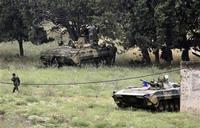
A new study of the 21 August chemical attack on rebel-controlled areas on the outskirts Damascus found that that the rockets used in the attack carried larger toxic payloads than had previously been estimated. Weapons experts say that the fact that the rockets carried up to fifty times more sarin nerve agent than previously thought helps explain why there were so many more victims than in previous chemical attacks by regime forces.
-
-
Cyberweapons likely to be an integral part of any U.S.-Syria clash
A U.S.-led military attack on Syria may have been averted, at least for a while, by the Russian proposal to negotiate the transfer of Syria’s chemical weapons stocks to international control, but had the United States gone ahead with a strike, there is little doubt that cyberattacks would have been used by both sides. If the United States decides to attack Syria in the future, we should expect cyberweapons to be used.
-
-
Obama: Russia’s chemical weapons proposal may be a “significant breakthrough”
President Obama on Monday described a Russian proposal for Syria to turn over control of its chemical weapons to international monitors in order to avoid a military strike a “potentially positive development,” which could represent a “significant breakthrough.” Obama said, though, that the proposal should be taken “with a grain of salt,” and it was viewed with some skepticism by the administration, with senior officials saying the proposal could possibly be a delaying tactic aimed to undermine Obama’s already tenuous efforts to push for a military strike. The Russian proposal called for Syria to open its chemical weapons stocks to international inspections and give complete account of its stocks; begin the process of supervised destruction of these weapons; and join the Chemical Weapons Convention.
-
-
Bomb-detecting lasers to improve security checkpoints
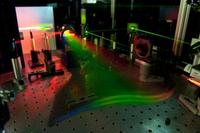
Research has put the possibility of bomb-detecting lasers at security checkpoints within reach by developing a laser that can detect micro traces of explosive chemicals on clothing and luggage. The laser not only detects the explosive material, but it also provides an image of the chemical’s exact location, even if it’s merely a minute trace on a zipper.
-
-
Researchers fabricate new camouflage coating from squid protein

What can the U.S. military learn from a common squid? A lot about how to hide from enemies, according to researchers. Researchers show that material that mimics calamari skin is invisible to infrared cameras, which is a good thing since infrared detection equipment is employed extensively by military forces for night vision, navigation, surveillance, and targeting.
-
-
Pentagon expands Syria attack plan
The Obama administration, in an effort to mobilize American public opinion to support a strike against Syria, has stressed that any military action would be limited in scope, but the Pentagon is preparing for a longer, and broader, campaign of bombardment of Syria than it originally had planned. The plan includes heavy missile strikes which will be followed by second and third waves of bombing of targets which were not initially destroyed or sufficiently damaged. The plan calls for the use of cruise missiles and aircraft from a U.S. Navy aircraft group in the Red Sea, and long-range bombers from outside the theater.
-
-
Syria’s chemical weapons stocks will not be attacked
Military analysts say Syrian president Bashar Assad will emerge with Syria’s chemical arsenal intact if the United States executes a limited airstrike. The United States contemplates a punitive strike in response to Syria’s use of chemical weapons against Sunni civilians on 21 August – and on about a dozen earlier occasions – but the U.S. attack, if it comes, is not likely to include the depots where the chemical weapons are stored because such an attack may release deadly gases which would cover the neighboring areas with toxic clouds, potentially creating a human and environmental disaster.
-
-
NYPD designated all NYC mosques as terrorist organizations to facilitate broad surveillance
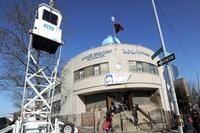
The New York Police Department (NYPD) secretly labeled entire mosques in New York as terrorist organizations, allowing the NYPD to use surveillance techniques including informants and spies without needing evidence or proof of criminal or terrorist activities to investigate the mosques. The investigations, known as Terrorism Enterprise Investigations (TEI), began after the 9/11 attacks on New York City and the Pentagon.
-
-
Flexible vehicle-arrest system stops cars involved in crime, terrorism
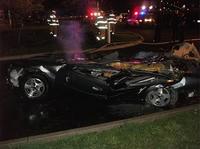
Researchers have developed a mathematical model that could help engineers design a flexible vehicle-arrest system for stopping cars involved in criminal activity or terrorism, such as suspect car bombers attempting break through a check point, without wrecking the car or killing the occupants.
-
More headlines
The long view
Factories First: Winning the Drone War Before It Starts
Wars are won by factories before they are won on the battlefield,Martin C. Feldmann writes, noting that the United States lacks the manufacturing depth for the coming drone age. Rectifying this situation “will take far more than procurement tweaks,” Feldmann writes. “It demands a national-level, wartime-scale industrial mobilization.”
How Male Grievance Fuels Radicalization and Extremist Violence
Social extremism is evolving in reach and form. While traditional racial supremacy ideologies remain, contemporary movements are now often fueled by something more personal and emotionally resonant: male grievance.
The Surprising Reasons Floods and Other Disasters Are Deadlier at Night
It’s not just that it’s dark and people are asleep. Urban sprawl, confirmation bias, and other factors can play a role.
Why Flash Flood Warnings Will Continue to Go Unheeded
Experts say local education and community support are key to conveying risk.
